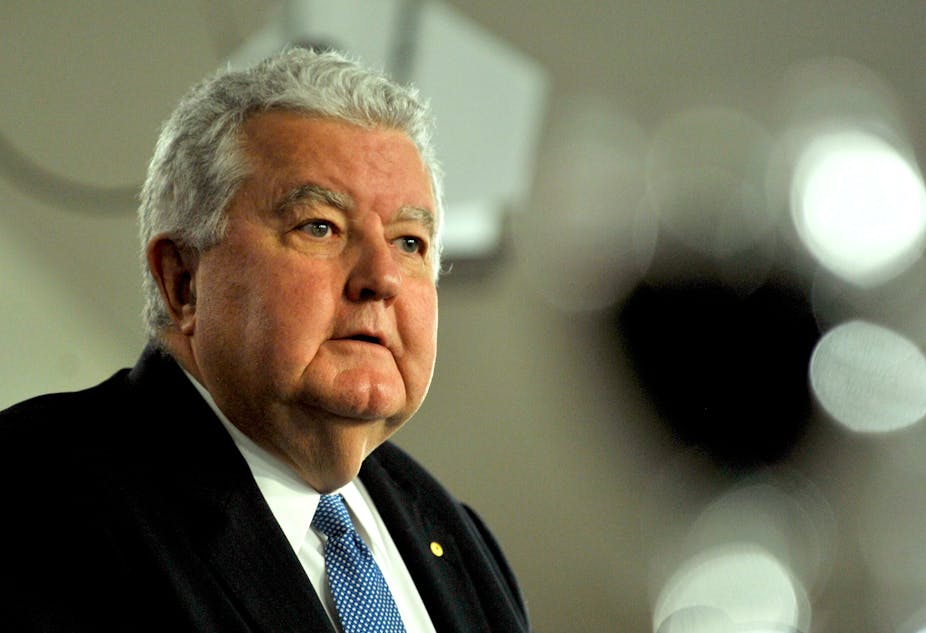Chief Scientist Ian Chubb’s Health of Australian Science report, launched today at the National Press Club, starts on an optimistic note. Australian science is generally in good health: school students’ performance compares well internationally; university enrolments in science programmes are on the up; and Australian researchers tend to punch above their weight.
However, the report warns against becoming complacent. Senior school participation in science has declined in recent years; overall university science enrolments are up, but have not returned to their position in the late 1980s; and increasing demands are being imposed on available research funding. In particular, some disciplines have been declining for several years, including agriculture, and the so-called “enabling sciences” of chemistry, mathematics and physics.
Science examination
The report’s aim is to provide “a comprehensive assessment of the available data in order to develop a profile of the strengths and vulnerabilities of Australia’s current science capability” including within science education in secondary schools and universities and scientific research.
This is a big ask, some might say, but one that is achieved by the report.
The Health of Australian Science report has been built on the work of staff from the Chief Scientist’s office and from other government departments. It also incorporates the results of three pieces of commissioned work.
The first of these considered the attitudes of first year university science students. The second was an examination of senior secondary school staff and student opinion on learning factors that affected students’ choice to study science. Finally, a comprehensive data analysis of university science learning, teaching and course completions in the first decade of the 21st century.
I can claim responsibility for the third: it was an extension of work I first did for the Australian Council of Deans of Science between 1997 and 2007.
It is difficult to quantify the size of the science system, with functional elements being education (schools and universities), research and development (R&D), and the workforce. Educational and R&D outcomes are disseminated to all sectors of the economy. In terms of R&D outputs, Australia produces 3% of outputs with about 0.3% of the world’s population. Seventy-five science-related policy programmes were supported by government funding for science, research and innovation.
Problems in schools
Attention to school science has been driven by concerns about declining proportions of students studying the enabling sciences and advanced mathematics. These concerns are not limited to Australia, and are part of a larger international trend.
The report shows that teachers saw time constraints as the main problem, including preparation, and time to cover the syllabus. Students could be encouraged to involve themselves in science to improve science uptake at school, and science teachers were seen by students as an important source of inspiration.
From some perspectives, enrolment numbers in senior school mathematics and science seem to be holding up, but as the report notes, there are difficulties of comparison in mathematics, for example, because of differences between jurisdictions and changes in mathematics curricula.
The report also mentions the difficulties in recruitment of senior science teachers, particularly their inclusion on the Skills Shortage List and the academic background science teachers have in science disciplines. For example, only about 54% of physics teachers have at least three years of university physics, although two-thirds have at least five years’ experience as physics teachers.
University blues
When it comes to university science, the report has more detailed information on enrolments, including in science, health, information technology and engineering.
The report importantly draws the distinction between domestic and international students. An uncertain proportion of international students pay for an Australian university education in order to enhance their chances of gaining permanent residency.
This explains the popularity of accountancy programmes, for example, a profession that is on the Skills Shortage List. However, in other cases, contemporary overseas students behave like the Colombo Plan students of the 1950s and 1960s. Their aim is to acquire qualifications unavailable to them in their home countries, and their goal is to return to countries of origin once the qualification has been gained.
The report notes that commencements in science bachelor’s degrees were steady between 2002 and 2008 (about 17,000 per year), but there was a surge between 2009 and 2010.
Publicly funded research grew during the past decade, but this has been more than matched by increased competition for grants and decreased success rates. This situation is noted by the report as a potential source of vulnerability.
Australia is also doing well in international comparison in terms of research outputs. Australia has a global impact higher than the global average in most fields of research, and the main source of growth has been in internationally collaborative publications. The report also notes the changing patterns of collaboration, with faster growth now occurring with emerging scientific areas in Asia.
Positive start
The Health of Australian Science report is the start rather than the end of improving science learning and research in Australia. It identifies the need for further investigation, particularly into the possible impact of the decline in the skills base in agriculture and the enabling science disciplines on Australia’s food security and innovation.
It also points to the need for research into the alignment of student choices with the national interest, the match between Australia’s areas of research excellence and the areas necessary for sustaining its position in global science, and finding the right balance between basic and applied research.
The report’s finding that most fields in the natural and physical sciences demonstrate research performance at or above international standards is a positive one. But this is offset by declining participation in the enabling sciences and the ageing of the scientific research profile.
The report tells us a lot about where Australian science has succeeded and where we need work. But it also shows that complacency is not a viable option.
Further reading:

